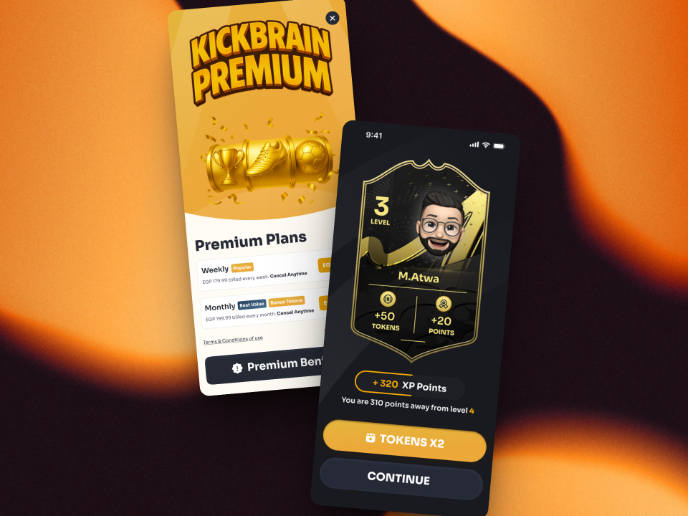Android
Android is a versatile mobile operating system, powering a wide range of devices and requiring thoughtful design and product strategies.

Android is a mobile operating system developed by Google, used globally on smartphones, tablets, wearables, TVs, and even automotive systems. Its open-source nature allows manufacturers to adapt the core system for their own devices, leading to a highly diverse ecosystem. This diversity is both a strength and a challenge for design and product teams, as it requires planning for multiple screen sizes, resolutions, and hardware capabilities.
From a UX/UI design perspective, creating for Android means working within guidelines such as Google’s Material Design. These guidelines define the visual language, component behavior, and interaction patterns that make apps feel familiar to Android users. Following them helps create consistency across devices, so users can navigate with confidence even if they switch between brands or form factors.
For product managers, Android’s market share represents a major opportunity. In many regions, Android dominates over iOS, especially in emerging markets where affordable devices drive high adoption. This makes it essential to design product strategies that address the needs of Android users, which might include optimizing for lower network speeds, supporting older OS versions, or localizing content for different languages and cultural contexts.
Real-world examples highlight these considerations. Streaming platforms like Netflix and Spotify invest heavily in Android optimization. They test performance on a wide range of devices, from high-end flagships to budget models, to ensure smooth playback and responsive interfaces. This investment pays off by retaining users who might otherwise abandon an app that feels slow or buggy.
From a product standpoint, supporting Android means embracing an ongoing testing cycle. New device models, OS updates, and manufacturer-specific changes can affect functionality. A robust QA process helps catch issues before they reach users, protecting both brand reputation and retention rates.
Collaboration between design and product teams is vital in this ecosystem. Designers bring the user-centered perspective, ensuring the interface is intuitive and appealing, while product managers prioritize features and performance optimizations based on analytics and market needs. Together, they can create an Android experience that balances usability, technical feasibility, and business goals.
Learn more about this in Android App Design Lesson, a part of Mobile Design Course.
Key Takeaways
- Open-source OS with wide global adoption.
- Requires adherence to Material Design principles.
- Must account for diverse hardware and screen sizes.
- Needs continuous testing for new devices and OS updates.
- Offers large growth potential in global markets.
Designing for Android requires accounting for a wider variety of devices, screen sizes, and hardware capabilities. Material Design offers guidance, but each manufacturer may add customizations that influence the user experience. Designers must ensure flexibility without losing clarity, often by building more adaptive layouts and testing extensively across device types.
Product managers also think differently about distribution. While iOS updates reach most users quickly, Android adoption is fragmented, meaning older versions remain in use for years. This forces teams to prioritize backward compatibility and phased feature rollouts. Unlike iOS, strategies for Android often focus on scaling to low-resource environments as well as premium devices.
Real-world comparisons highlight the difference. An iOS app might be designed around consistent gestures and hardware, while the Android equivalent must adapt to everything from mid-range phones in developing markets to foldable flagships. Both platforms require polish, but Android’s diversity demands broader testing and planning.
One of the biggest challenges is fragmentation. With hundreds of device models running different Android versions, product managers must decide how far back to support. Each additional version supported increases QA effort and technical complexity. Ignoring older versions risks excluding key markets, but supporting them indefinitely slows innovation.
Distribution is another challenge. Unlike iOS, updates to Android apps and OS versions are not uniform. Some users may take months or years to update. Product managers must craft strategies that account for staggered adoption, designing features that degrade gracefully on older devices. This requires close collaboration between engineering, QA, and design.
Finally, cultural and regional diversity across Android users adds complexity. Product managers may need to adapt products to local languages, payment systems, or regulations. Android’s scale makes it attractive, but it also requires careful segmentation and planning to serve a truly global audience.
Material Design provides a shared set of principles and components that make Android apps feel intuitive. It establishes expectations for spacing, movement, and visual hierarchy, which helps users quickly understand how to navigate and interact with an app. Following these guidelines creates consistency and reduces learning curves.
For designers, Material Design offers a toolkit of tested solutions. Instead of reinventing layouts or patterns, they can build with established structures, speeding up workflows and reducing usability risks. For product managers, this translates to fewer errors and faster delivery timelines, as development teams work with well-documented standards.
Companies that follow Material Design often achieve higher user satisfaction. For instance, apps that integrate native navigation drawers and floating action buttons feel natural within the Android ecosystem. By contrast, apps that ignore these norms can frustrate users, appearing unfamiliar or less trustworthy. Material Design ensures products remain aligned with user expectations.
Recommended resources
Courses

UX Design Foundations

Design Terminology

Common Design Patterns
Lessons

Android App Design

How to Prepare for the App Store & Google Play Store Review
Exercises
Projects

User Personas for LinkedIn

Redesigning KickBrain: Trivia Mobile Game










